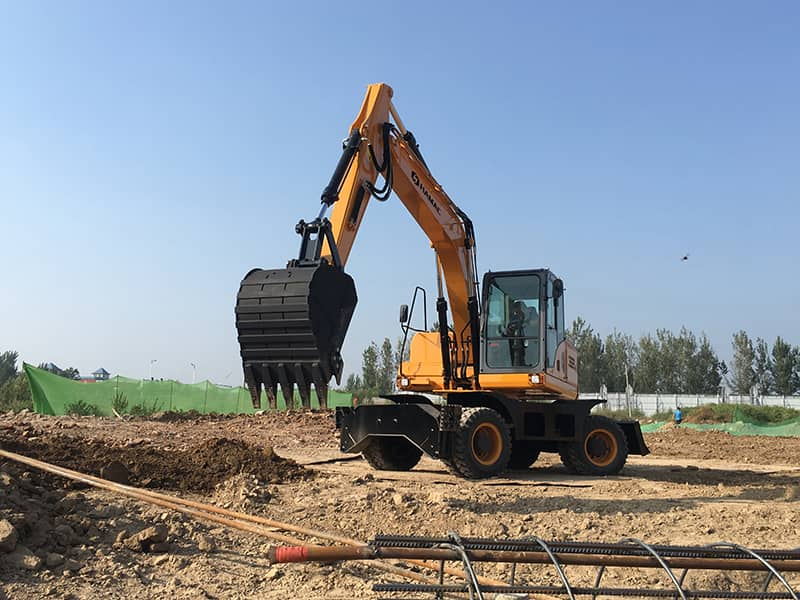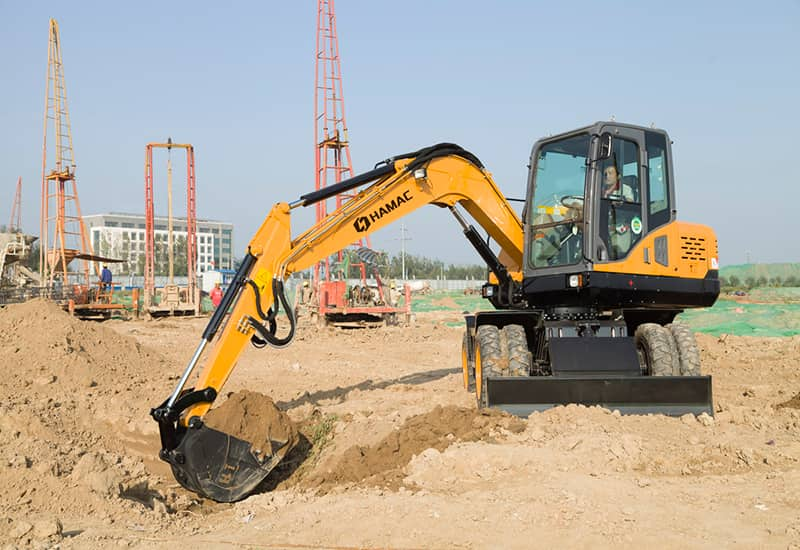How to maintain a wheeled excavator
Last Updated: 2025-08-27
A wheeled excavator is a workhorse for construction, demolition, and rural projects — but its performance and lifespan depend entirely on consistent maintenance. Neglecting upkeep can lead to costly breakdowns, delayed projects, and reduced resale value. Below is a practical, actionable guide to maintaining your wheeled excavator, tailored to both daily checks and long-term care.
1. Daily Pre-Operation Inspections
Start every workday with a 10–15 minute walkaround inspection to catch small issues before they escalate. Focus on these key areas:
- Tires & Wheels: Check tire pressure (refer to the manufacturer’s specs — typically 35–45 PSI for heavy-duty models) and look for cuts, bulges, or embedded debris. Inspect wheel nuts for tightness; loose nuts can cause uneven wear or wheel detachment.
- Fluids: Verify levels of engine oil, coolant, hydraulic fluid, and fuel. Use the dipstick for oil (ensure the engine is cool) and check hydraulic fluid while the machine is idle. Look for leaks under the excavator — even small hydraulic leaks can lead to system failure.
- Filters: Inspect air, fuel, and hydraulic filters for dirt or clogs. A dirty air filter reduces engine efficiency, while a clogged fuel filter can cause stalling.
- Lights & Safety Features: Test all lights (headlights, taillights, turn signals) and confirm the horn, backup alarm, and seatbelt work properly. Safety components are critical for on-road travel (common with wheeled excavators) and job site compliance.

2. Regular Hydraulic System Maintenance
The hydraulic system is the heart of your wheeled excavator — responsible for bucket movement, boom operation, and steering. Poor maintenance here leads to slow performance or complete failure:
- Change Hydraulic Fluid & Filters: Replace hydraulic fluid every 1,000–1,500 operating hours. Use only the specified fluid type (e.g., ISO 46 hydraulic oil) to avoid damaging seals. Swap out hydraulic filters at the same time to remove contaminants.
- Bleed Air from the System: Air in hydraulic lines causes spongy operation or jerky movements. After fluid changes, run the excavator’s arms and bucket through full cycles 5–10 times to purge air.
- Inspect Hoses & Seals: Check hydraulic hoses for cracks, abrasion, or swelling. Replace hoses every 2–3 years (even if they look intact) to prevent sudden bursts. Inspect cylinder seals for leaks — worn seals let fluid escape and reduce lifting power.
3. Engine Care for Longevity
A well-maintained engine ensures your wheeled excavator runs efficiently and meets emission standards :
- Oil Changes: Change engine oil every 250–500 operating hours. Use high-quality diesel engine oil (e.g., SAE 15W-40) and replace the oil filter each time. Old oil collects sludge, which damages engine components.
- Cooling System: Flush the coolant system every 2 years to remove rust and sediment. Check the radiator for dirt or debris — clogged radiators cause overheating, especially in hot weather. Ensure the coolant mixture is 50% coolant and 50% water for optimal freeze and boil protection.
- Fuel System: Use clean, high-quality diesel (B20 biodiesel is acceptable for most modern models). Drain water from the fuel tank weekly — water causes fuel injector damage. Add a fuel stabilizer if the excavator will be stored for more than 30 days.
4. Monthly & Quarterly Deep Checks
Beyond daily and fluid maintenance, schedule deeper inspections to address wear that’s not visible in quick checks:
- Undercarriage & Axles: Inspect axle bearings for noise or excessive play. Lubricate pivot points (e.g., boom hinges, bucket pins) with lithium grease every month — this reduces friction and extends part life.
- Electrical System: Check the battery terminals for corrosion; clean them with a wire brush and apply anti-corrosion gel. Test the alternator to ensure it’s charging the battery properly — dead batteries are a top cause of downtime.
- Attachment Connections: If you use quick couplers for buckets, breakers, or snowplows, inspect the coupler’s locking mechanism monthly. Worn locks can cause attachments to detach unexpectedly.

5. Proper Storage & Off-Season Care
If your wheeled excavator sits idle for weeks (e.g., winter months), proper storage prevents deterioration:
- Clean the Machine: Wash the exterior to remove dirt, mud, and salt (critical for machines used in snow removal). Clean the undercarriage to prevent rust.
- Park on a Flat Surface: Use jack stands to lift the tires off the ground if storing for more than a month — this avoids flat spots.
- Protect Fluids & Engine: Fill the fuel tank to prevent condensation, and start the engine once a week (let it run for 10 minutes) to circulate fluids. If storing outdoors, cover the excavator with a waterproof tarp to shield it from rain and UV rays.
Final Tips for Maintenance Success
- Follow the Manufacturer’s Manual: Every wheeled excavator model has unique maintenance schedules — never skip or delay recommended tasks.
- Keep Detailed Records: Log every oil change, filter replacement, and repair. This helps track maintenance cycles and increases resale value if you sell the machine later.
- Train Operators: Ensure anyone using the excavator knows how to perform basic checks (e.g., fluid levels, tire pressure). Operators often notice issues first, like unusual noises or slow operation.
By following this guide, you’ll extend your wheeled excavator’s lifespan to 10,000+ operating hours, reduce repair costs by 30–40%, and keep it running reliably for every project.
TAG: Wheel type Excavatorwheeled excavator
